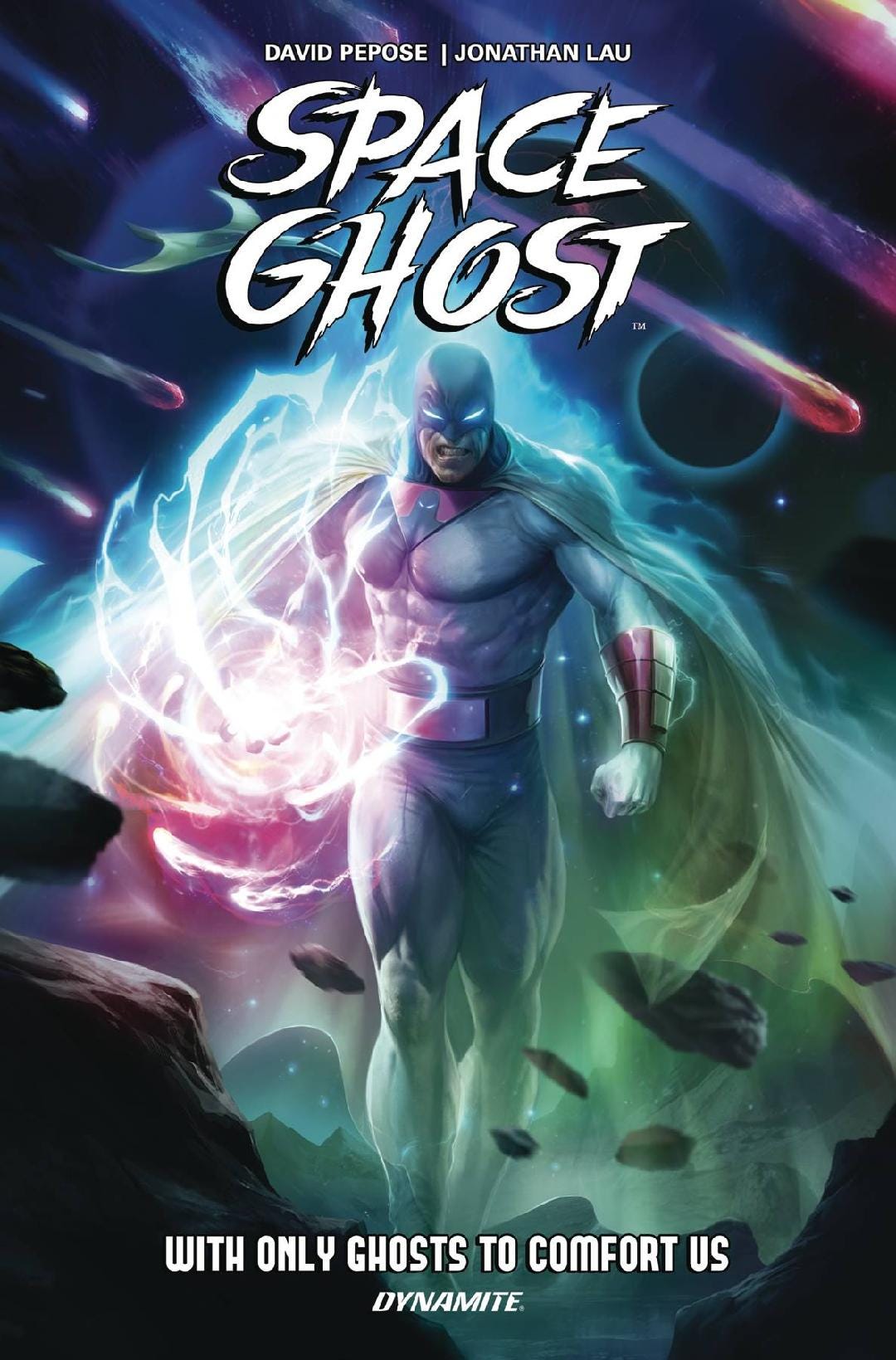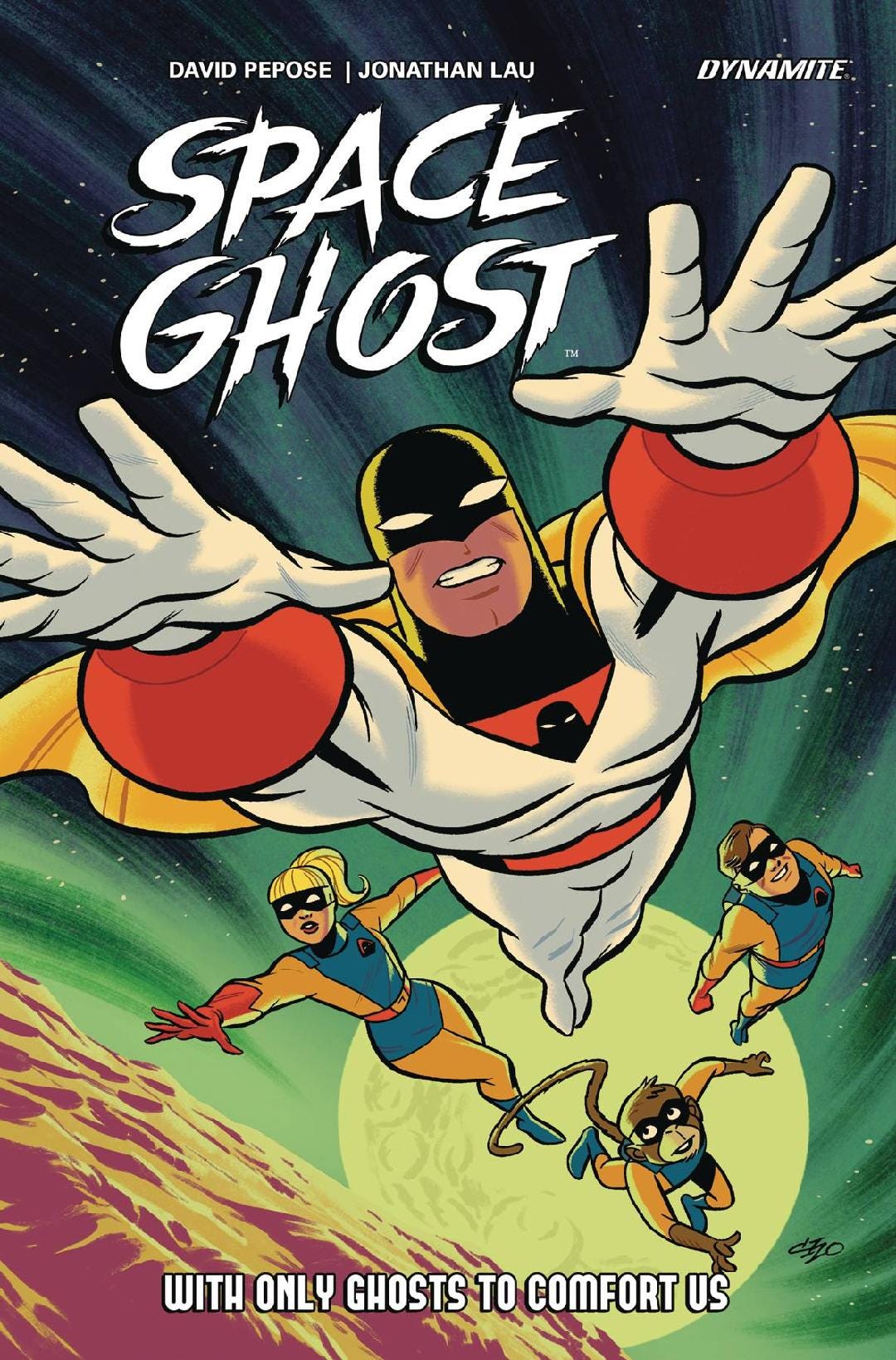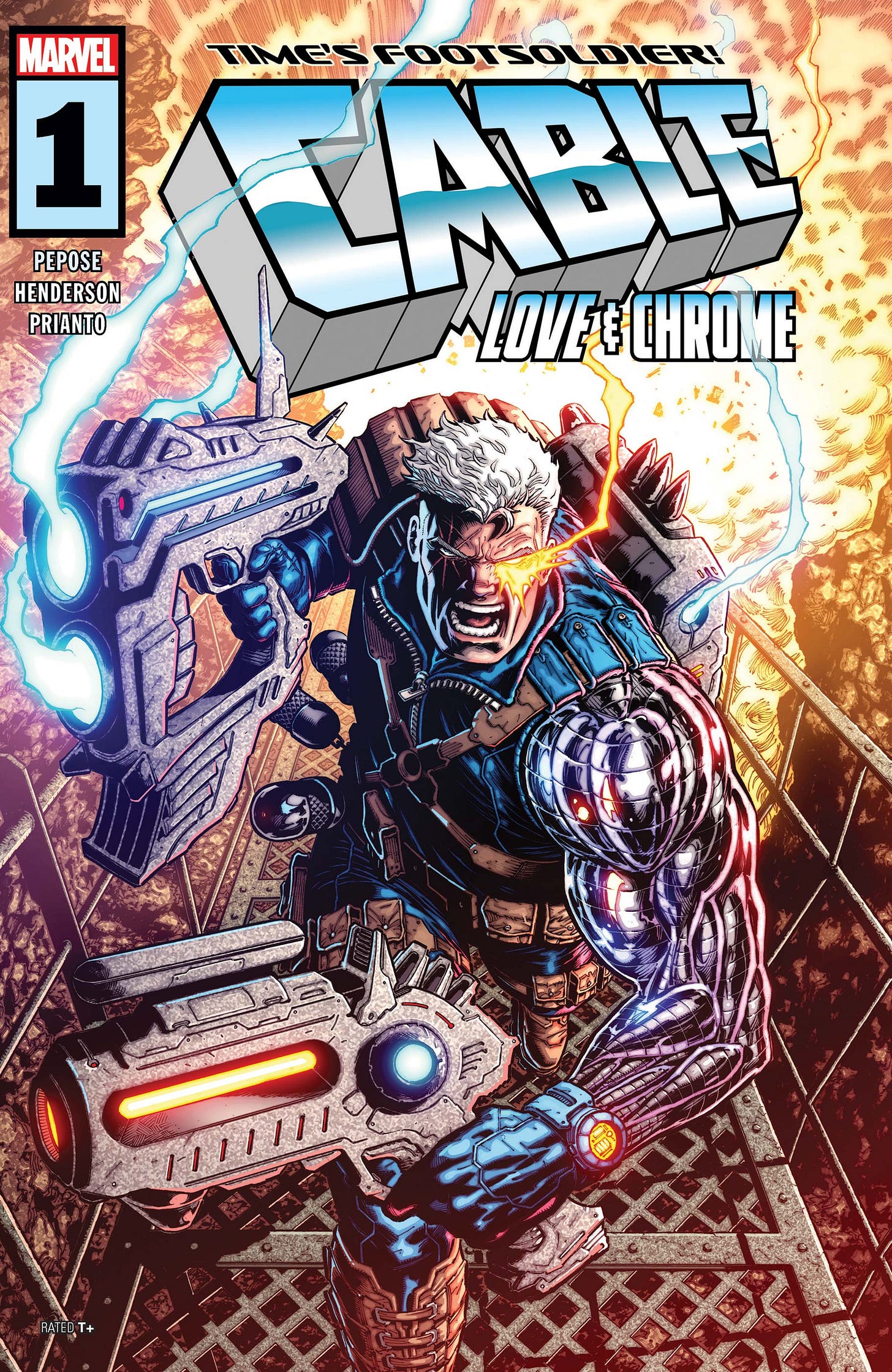Writer David Pepose discusses 'Space Ghost'
Word Balloons #1251: How Batman helped inspire space faring hero and more in this extra-length content
Featuring stunning powers and gadgets, “Space Ghost” was born during the superhero boom of 1966, designed by the legendary Alex Toth. The latest writer to helm the adventures of Space Ghost is David Pepose.
The first collected edition is on sale now and contains the first six Dynamite issues. SPACE GHOST, VOL. 1: WITH ONLY GHOSTS TO COMFORT US is available in two separate covers in both hardcover and paperback formats, one from Francesco Mattina (Hardcover - SEP240294, Paperback - SEP240295) and one from Michael Cho (Hardcover - SEP240296, Paperback - SEP240297). I recently interviewed Pepose for “Comic Shop News” – read issue #1952, available now! Check out more from our conversation in this week’s column!
Matthew Price: Your Space Ghost seems to have some “Batman” elements, which makes sense as both characters were prominent in the superhero resurgence around 1966. What are some of the similarities between these characters? Is there something in the DNA of these characters that makes them work both as very serious versions, comedy versions, and many spots in between?
David Pepose: I think that shared DNA is the very reason Space Ghost exists in the first place — I think it’s pretty clear he was created in the ‘60s as a response to Adam West’s Batman, during a time where every network was trying to ride the wave by either licensing superheroes or creating caped crusaders of their own. There’s something timeless and elemental about a masked vigilante stopping injustice by taking matters into their own hands — but I think Space Ghost really improved upon that tried-and-true formula in two distinct ways. The first was injecting Buck Rogers-style sci-fi into the mix, which really broadens the kinds of stories Space Ghost can organically inhabit — he not only can perform all kinds of superheroic feats with his Power Bands and Inviso-Belt, but you’re able to introduce alien worlds and villains that let you explore the fantastical in a way that doesn’t strain the limits of a street-level setting like Gotham City.
But beyond that, I’d argue the most important components of Space Ghost’s mythology are his sidekicks Jan, Jace, and Blip — while there’s clearly Batman stories that feel organic without Robin, I’d argue Space Ghost’s sidekicks are a core part of the character from his very first appearance, and that you ultimately cannot tell a true Space Ghost story without them. Hanna-Barbera was really savvy in giving both young boys and young girls a point-of-view character they could project onto, and I think having that found-family ensemble is what makes Space Ghost such an inherently interesting and noble hero to me — the drama and character dynamics are what keeps this series fresh just as much as the villains.
MP: The Alex Toth design is timeless – if a new hero today debuted this look, it would still be a stylish look for a superhero! What do you find significant about the look of Space Ghost?
DP: “Timeless” is exactly the word I’ve used — that contrast between the white suit and the black cowl, the highlights of the yellow cape and the red gauntlets, it continues to feel unique in a genre that’s otherwise been so thoroughly explored over the years. By virtue of his unique gadgets, Space Ghost’s visual iconography can jump between Batman, Superman, or even retro sci-fi classics like Buck Rogers and Flash Gordon, so there’s a versatility there that I think transcends so many other superhero characters out there. And having Jonathan and Andrew capturing Space Ghost in their unique way is proof of Toth’s versatility — that his designs not only stand the test of time, but can be successfully translated in any number of visual styles.
MP: Space Ghost has a fairly deep bench of villains! How did you decide who to use here, and what tweaks to give them?
DP: Like we were just saying earlier, Alex Toth was an absolute genius, and the way that his designs did so much heavy lifting personality-wise for all of his characters on Space Ghost feels nothing short of alchemy. It also helps that the original Space Ghost series ended with a supervillain team-up in the Council of Doom, so it’s been easy to build my series to build up all those iconic villains, almost like a reverse-Justice League. Zorak, Brak, Metallus, The Widow, Creature King, Moltar… they’ve each got their own unique personalities, abilities, and motivations, and they’ve really allowed us to explore all these different facets of Space Ghost and his universe.
We’ve definitely added a few twists to each of these villains — Brak as a corrupt Galactic Patrol officer, The Widow as a crime lord, Zorak as the homicidal leader of a space cult, just as an example — but ultimately, our goal was just to add to what was already there. Nothing about Space Ghost has ever been broken, so there’s nothing to “fix” — it’s always been about leaning into the most exciting and dynamic versions of these characters we can possibly imagine.
MP: Overall, what were your feelings about what you absolutely had to keep about previous versions, and were there any elements that you were concerned might be too dated?
DP: For me, Space Ghost has always been about the characters, so making sure we could incorporate as many of them as possible while staying true to the original core conceit — Space Ghost acting both as a sci-fi superhero, but also a mentor and father figure to Jan, Jace, and Blip. From his ‘60s debut to his ‘80s revival to his reinvention as a postmodern MTV-era comedy talk show host, Space Ghost has always been a product of its time, so the tone has always been the element that’s evolved the most. But for me, focusing on Space Ghost, Jan and Jace’s evolving character arcs has always been a guiding principle for our series, and I’ve also found it to be important to find new wrinkles to add to our cast of villains, to make them immediately compelling and daunting in a way readers can instantly understand.
MP: Is there anything else you’d like to tell me about?
DP: Sure! Beyond my ongoing work on Space Ghost and a few unannounced projects for 2025, I’m currently writing Cable: Love and Chrome at Marvel with artist Mike Henderson, a new miniseries that’s scheduled to debut in January. I’m thrilled to be part of Marvel’s new X-Men relaunch, especially getting to explore the most action-packed and extreme X-Men character from my ‘90s upbringing. To me, the X-Men have always had other telepaths and time-travelers in their roster — so what’s made Cable stand out as such a unique and complex character to me has been his lifelong battle against the Techno-Organic Virus, a chronic and terminal condition that he has to manage every day in order to survive. He’s a time-traveler living on borrowed time — and our series follows Cable as he winds up meeting someone with his exact same condition. Cable: Love and Chrome is a story about love, about loss, about the struggle of confronting your own mortality against the inevitable… but it's also a story that has all the big guns, big action, and big attitude you’d expect from a classic Cable adventure. So be sure to bodyslide over to your local comics shop and add all five issues to your pull-list!
Matthew Price, matthew@matthewlprice.com, has written about comics, entertainment, film, and a variety of topics and industries for more than two decades. He is the co-owner of Speeding Bullet Comics in Norman, Oklahoma, and a contributing editor to Comic Shop News.







